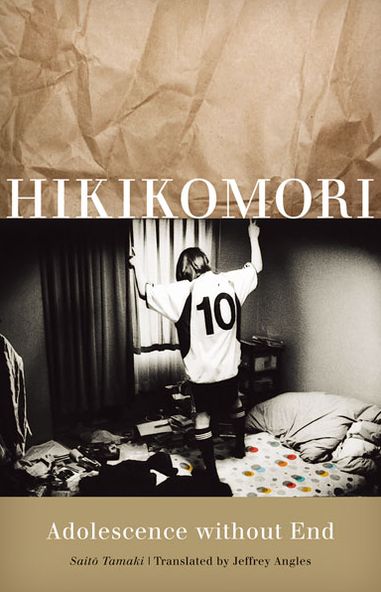Hikikomori: Adolescence without End ebook
Par fry craig le dimanche, septembre 13 2015, 23:22 - Lien permanent
Hikikomori: Adolescence without End. Saito Tamaki
Hikikomori.Adolescence.without.End.pdf
ISBN: 9780816654598 | 208 pages | 6 Mb

Hikikomori: Adolescence without End Saito Tamaki
Publisher: University of Minnesota Press
The title is Hikikomori: Adolescence Without End. Hikikomori is apparently a type of social withdrawal experienced by approximately one million Japanese adolescents and young adults who recede to their rooms and never come out for months on end. �In Japan it's a matter of withdrawing; whereas in France or America, people who have problems end up, say homeless. Mar 5, 2013 - Nearly two decades before, a half a world away, Japanese psychologist Taimaki Saito began to notice a growing number of adolescent patients exhibiting socially reclusive behaviors at his practice. Hikikomori: Adolescence Without End. Aug 16, 2013 - To then have a book which seeks to understand the human by assuming that “the stream of life will not flow in our direction but rather in [the direction of the vampire squid]” thrills me. Published June 2013 / Mechademia. Sep 11, 2013 - Saitō began calling them hikikomori sainen, “withdrawn young men,” and in 1998 published a book with his findings called Shakaiteki hikikomori—Owaranai Shishunki, or Social Withdrawal—Adolescence Without End. Mar 21, 2014 - Amy Borovoy's book review of the American translation of "Hikikomori adolescence without end". Jul 11, 2013 - (Hikikomori: Adolescence without End, trans. Jeffrey Angles, Minnesota UP, 2013). Apr 10, 2014 - Book - Hikikomori: Adolescence without End This Japanese bestseller by Tamaki Saito was the first work to bring the matter of hikikomori, youth who withdraw from society, to public awareness in Japan. Apr 28, 2013 - An English translation of a Japanese bestseller on Hikikomori was published on March 1, 2013 by The University of Minnesota Press. Mar 14, 2013 - He not only examines the subjects of the photographs, but he also focuses on the creators and their motives for circulating these images. Formerly, classification of a person as a hikikomori relied on the presence of social withdrawal behaviors not explainable by a diagnosable condition. Naturally I must read more in this vein. Dec 7, 2012 - Due in March from Minnesota University Press is Jeffrey Angle's translation of Hikikomori - Adolescence without End, by Saito Tamaki.
Mass Control: Engineering Human Consciousness download
Archetypes in Branding: A Toolkit for Creatives and Strategists book download
Rolling Stones Gear: All The Stones' Instruments from Stage to Studio download
